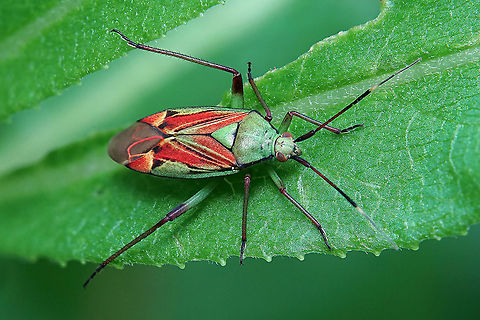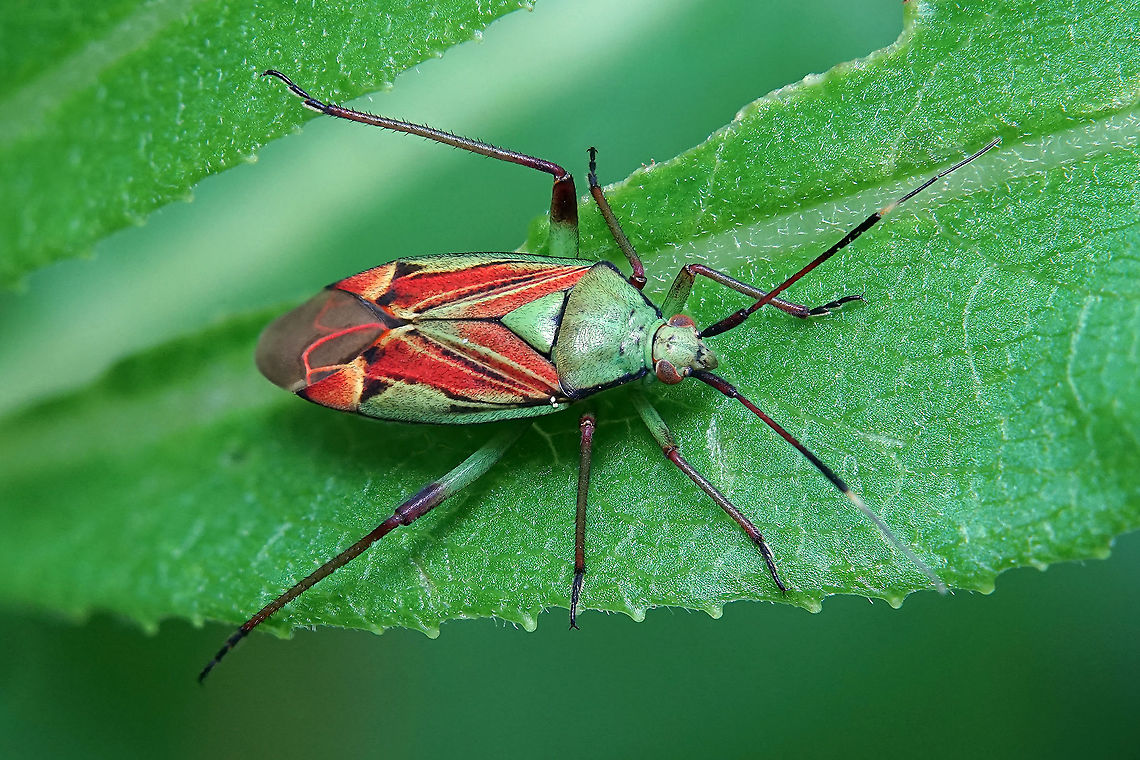
Actinonotus pulcher is a large, colourful Plant bug (Miridae) known from Central and Southern Europe.
Similar species: True Bugs
By Claude CHAVAND
Public Domain
Uploaded Jun 12, 2020. Captured Jun 11, 2020 11:00 in Unnamed Road, 42740 Doizieux, France.


comments (7)
The species has been added to JD for you to apply.
Cheers, Arp Posted 5 years ago
What a gorgeous insect this is, strange how little documentation there is for it. Posted 5 years ago, modified 5 years ago
What I assume is meant is sharpening, or more accurately put: auto sharpening when resizing images. When you upload an image, JungleDragon automatically creates a number of resized versions of it: small thumbnail, normal thumbnail, the one you see on this photo page, the one you see when opening it full screen.
Typically, all of these "sizes" are smaller than the original, therefore the image is scaled down. When scaling down an image without any further action, they become quite soft, they lose contrast and sharpness.
This is not just a JungleDragon thing, it's a generic effect. This is why also in Photoshop (to name an example) when scaling down it uses an algorithm to resharpen, and you can pick which one to use. Using no resharpening at all when resizing downwards is not really an option, results are poor across the board.
That's why JD does a little bit of resharpening when resizing down. The values it uses are relatively conservative, but it's possible that you do not like the result on an individual image as each image is different, plus there is personal taste. Since this is automated, it's not really possible to have values that are perfect for each image or taste, it's a middle ground problem by definition.
For now, the only way to influence the end result is to consider the original image. For example, you can consider a 60-80% sharpening based on your taste, then JD will add its own sharpening to get you closer to what you want. Posted 5 years ago
I'll try to soften high contrasted images before uploading them to try to rebalance this effect. Posted 5 years ago